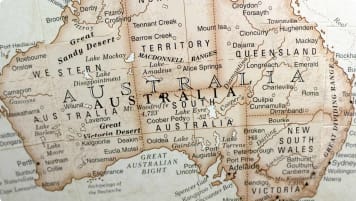Australia’s Ocean Frontier: Exploring the Eyre Peninsula, South Australia
Learn about the landscape and the recent settlement of this Peninsula on the South Australian coast. To see and learn more join on the this collection of Australian small group package tours for mature and senior travellers, couples or singles or join the Eyre & York peninsula program.
30 Jun 20 · 12 mins read

Australia’s Ocean Frontier: Exploring the Eyre Peninsula, South Australia
On the Eyre Peninsula in South Australia, life is determined by the sea. Bounded by the wilds of the Southern Ocean to the south and west, and the calm waters of the Spencer Gulf, the Eyre Peninsula South Australia is ‘Australia’s seafood frontier’, the wild ‘far west coast‘. Thanks to its nutrient-rich waters, the Peninsula is home to an abundance of marine life, from prize tuna, giant cuttlefish to rare Australian sea lions. But the frontier is as true to this place as the seafood: the Eyre Peninsula region remains a place of rugged beauty and wildness, where the sea remains the ‘great maker and breaker’, creating fortunes and taking lives ( Australian Geographic ).
The dual nature of the sea is thanks to the geography of the Southern Eyre Peninsula, which was named for explorer Edward John Eyre . To the west, the peninsula reaches the Great Australian Bight and Southern Ocean, where the Roaring Forties create cold winds and huge swells. To the east, the peninsula defines the calm waters of the Spencer Gulf.
At the tip of the Southern Eyre Peninsula, the two huge peninsulas of Lincoln Bay and Coffin Bay national parks jut out east and west respectively, with landmass forming the shape of an anchor. The twisty coasts of these two peninsulas, a mass of coves, headlands and outcrops, give the sea a ‘split personality’, as it goes from rough waves to the sheltered pristine waters of a bay within metres.
Geologically, this is thanks to the influence of the ancient Gawler Craton, one of the world’s most stable landmasses, dating back as far as 2.4 billion years. These ancient granites hold fast at the bottom of headlands and cliffs, resisting the winds and swells of the Southern Ocean, protecting the younger layers of limestone above.
Off the coast of the peninsula, the Great South Australian Coastal Upwelling System brings cold, nutrient-rich waters to the surface from the edge of the continental shelf. These dissolved nutrients are at the base of the food chain, attracting fish, seabirds, penguins, sea lions, bottlenose dolphins, blue whales, Southern right whale and other marine life to the area. This marine life is a bounty that has brought people to the Eyre Peninsula for tens of thousands of years – but this abundance has always borne a cost.
Cape Catastrophe, 1802:
In February 1802, the HMS Investigator, commanded by Matthew Flinders, was anchored near a large island off the Jessieu Peninsula, south of Port Lincoln. Sailing from the south-west of Australia to Port Jackson (Sydney), the Investigator aimed to be the first ship to circumnavigate Australia, under the leadership of its young commander, 27-year-old Matthew Flinders. Though young, Flinders was an experienced explorer, having charted Bass Strait in 1798.
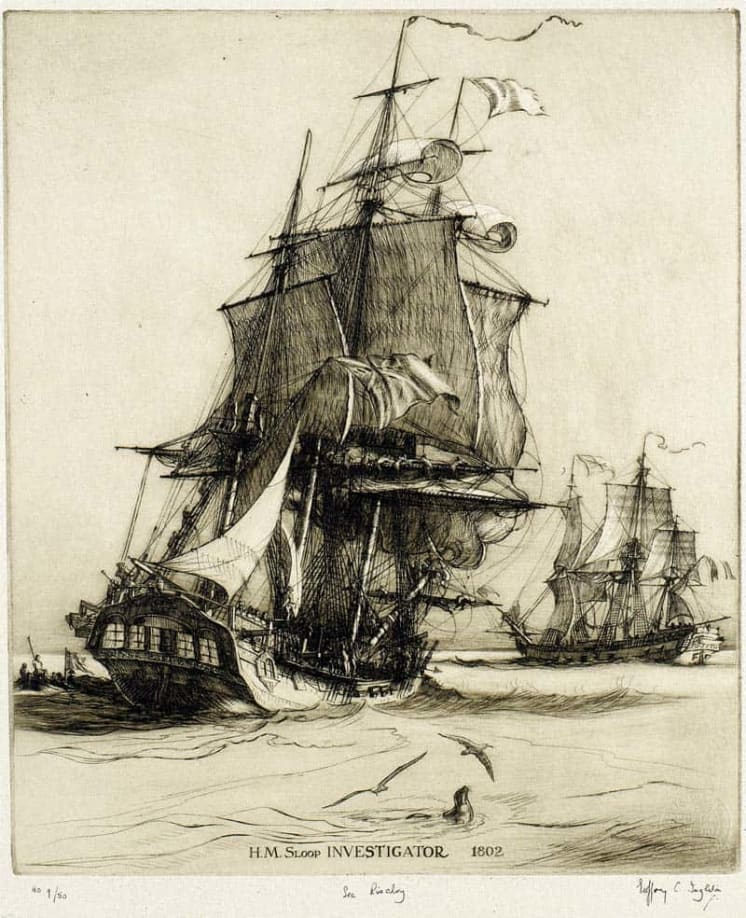
In need of water for the ship and crew, Flinders sent a party of men lead by the shipmaster, John Thistle, to the mainland. The conditions seemed calm and innocuous, and Flinders saw the cutter returning at dusk. Two hours later, the men had not returned. Flinders sent Lieutenant Fowler in search, but he came back alone. It became clear that the waters had changed and the cutter had crashed and the men – not strong swimmers – had been lost. The tragedy was confirmed the next day when Flinders and his crew found the wreck of the cutter.
In memory of the lost men, Flinders named the southern most point of the peninsula Cape Catastrophe, while a secluded bay nearby, where he left a copper plaque, was named Memory Cove, with the eight islands dotting the Thorny Passage each named after one of the lost men. The largest – Thistle Island – was named for John Thistle, who had served with Flinders for eight years. Flinders would write in his journal that:
‘His loss was severely felt by me; and he was lamented by all on board, more especially by his mess-mates, who knew more intimately the goodness and stability of his disposition’ (Flinders, A Voyage to Terra Nullius).
A couple of months later, Flinders would meet Nicholas Baudin at Encounter Bay, while charting the Fleurieu Peninsula. The ship safely reached Port Jackson in May 1802, successfully circumnavigating Australia on a voyage from 1802-3.
Flinders and his men were not the last to be swept away in the mercurial waters of the Eyre Peninsula. In the 19th century, boats remained the major source of transportation around the arid Australian continent. In total, 850 shipwrecks line the South Australian coast, most from the 19th century.
In the early 19th century, small wooden whaling vessels were frequently pushed off the coast and wrecked on the Eyre Peninsula. Crews encountered hidden reefs, and were blown ashore when as the winds suddenly changed. These wrecks line the coast on both sides of the Eyre Peninsula, providing a haven for marine life – corals, sponges, and sea stars – and ideal diving opportunities.
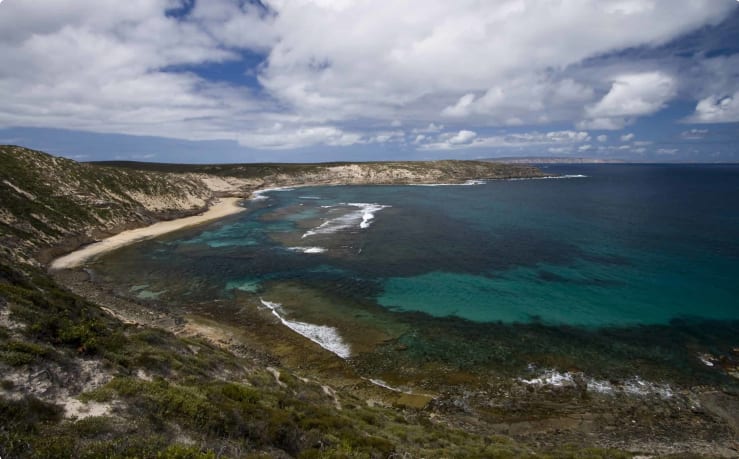
Tuna millionaires, shark singers, and oyster fishermen:
Yet, the sea can give as much as it takes away. When Ross Haldane and his family moved to Port Lincoln in 1952, the town was a sleepy shipping port. They had come from the coastal town of Port Fairy, Victoria, where they had spent seven years building by hand a 25 metre seagoing tuna vessel, on the basis of designs they had bought from a company based in Tacoma, United States. They named their vessel the Tacoma in honour of the company. Over the next forty years, they trawled the Spencer Gulf for prawns and southern bluefin tuna, spurring the commercialisation and expansion of Port Lincoln’s seafood industry. ‘Our whole life was seaward looking’ recalled Ross Haldane, the son of the oldest Haldane brother, who virtually grew up on the Tacoma in the 1950s.
The Haldanes, along with other families, including the Puglisis, Sarins, Lukins, and Santics, transformed Port Lincoln into the ‘seafood capital of Australia.’ Today, Port Lincoln has Australia’s largest commercial fishing fleet, with an annual tuna haul of 4600 tons. Giant boats punch into the mountainous seas, hauling up to 40 tons a day of tuna.
In particular, the growth of Port Lincoln was driven by Japanese demand for premium bluefin tuna for sushi and sashimi. The trade meant that local fishermen became ‘tuna millionaires’ overnight. Their palatial mansions – nicknamed ‘Dallas’ and ‘Dynasty’ by observers in the 1990s – lined Boston Bay and spread to the north-east of the city. Today, Port Lincoln has the most millionaires per capita in Australia. Most famous is Tony Santic, the owner of the three-time Melbourne cup winner Makybe Diva, who is honoured with a life-size statue on the Port Lincoln foreshore.
Port Lincoln’s seafood industry is highly technological and scientific. Practical science determines when and where trawling will occur. Largely successful attempts to conserve the stocks have made the Spencer Gulf into one of the best-managed fisheries in the world. Recent years have seen the development of a thriving aquaculture industry that farms species including bluefin tuna, yellowtail kingfish, abalone, mussels and oysters.
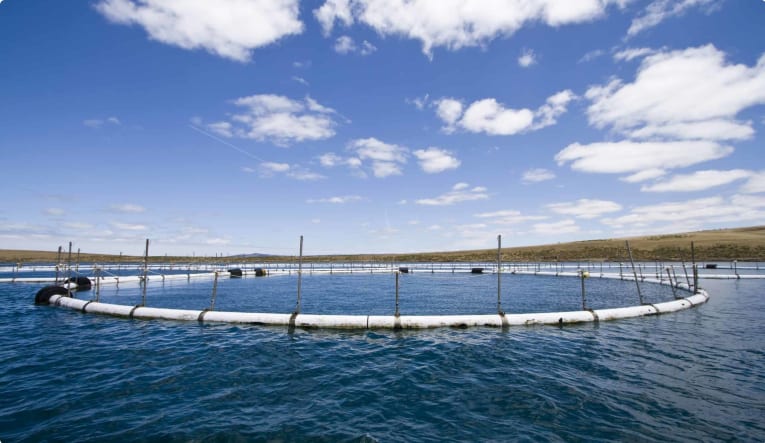
The coastal upswelling had proved a bounty to fishermen and women long before the emergence of the ‘tuna millionaires’. For the traditional owners of the land, the Naou and Bangarla people, fishing tuna was a vital source of sustenance. Archaeologists have found that the Lower Eyre Peninsula has the highest density of traditional tuna traps in Australia (Welz, 2002), which can be seen in Lincoln National Park and Coffin Bay National Park today. The Bangarla engaged in a ritual practice known as ‘singing to the sharks’, in which men lined the cliffs and sung out. Their chants were accompanied by women dancing on the beach. The idea was to encourage sharks and dolphins to drive fish to shore, where they could be more easily caught.
For others, the abundance of the sea was fleeting. In the early years of settlement, the Eyre Peninsula was a magnet for sealers, but seal numbers depleted so quickly that interest turned to whaling. Whaling stations were set up at Spalding Cove (in Lincoln National Park) and Coffin Bay, attracting international crews from France and the United States. Declining whale numbers meant that whaling became unviable as early as the late 1840s.
The small settlement of Coffin Bay then turned to another sea bounty: oysters. The first mention of the commercial exploitation of oysters near Coffin Bay appears in an extract of a letter from 28 April, 1848. By the following year, there was up to thirty cutters dredging the bay for oysters, and the settlement became known as ‘Oyster Town’. Huts were thrown up quickly for the fishermen’s families who had accompanied them to the area.

Dredging for oysters was a hard life. Fishermen worked from dawn to dusk, fishing through the day, then cleaning the shells of debris in the evening. Oysters were then bedded down, live, in the water, until the fortnightly market day, which transformed the town into a hive of activity. Wagons would drive down from Port Lincoln and fill up with oysters, eaten in Port Lincoln and brought further afield to Adelaide. More than 250, 000 oysters were brought from Coffin Bay every fortnight.
The sea could not keep giving. Oyster populations rapidly declined thanks to rapid overfishing. From 1882 to 1891 the lack of oysters led to an official closure of the oyster fishery, leading to the decline of the town. The native oysters never recovered, an issue of debate among marine biologists. Some suggest that the fishermen did not return their shells to the sea (as they would only dredge them up next time) – meaning that young oyster spat did not have a surface on which to attach and grow. The historic Oyster Town and whaling station are now an archaeological site – including the remains of several fisherman’s huts – which can be explored on the Oyster Walk.
In the 1960s, the Pacific oyster was imported from Japan via Tasmania, starting the current Coffin Bay oyster industry. Known nationally and internationally, contemporary Coffin Bay oysters are a testament to the richness of the environment for oyster growth.
Things to see on the Eyre Peninsula:
The natural and geographic features that have made the Eyre Peninsula both a place of tragedy and fortune also make it one of Australia’s best holiday destinations. With rugged landscapes, panoramic sea views, and a wealth of natural wildlife, the Eyre Peninsula has so much to offer the traveller – and best of all, its remoteness from the population centres of the east coast means that you’ll have it all to yourself.
The major settlement, Port Lincoln, was mooted as a potential capital of South Australia in the 1830s. Sitting on Boston Bay – a natural harbour three times the size of Sydney Harbour (and as such, the largest harbour in Australia) – the town seemed like an ideal capital, with easy port access. But the idea was quickly abandoned thanks to the lack of freshwater on the peninsula.
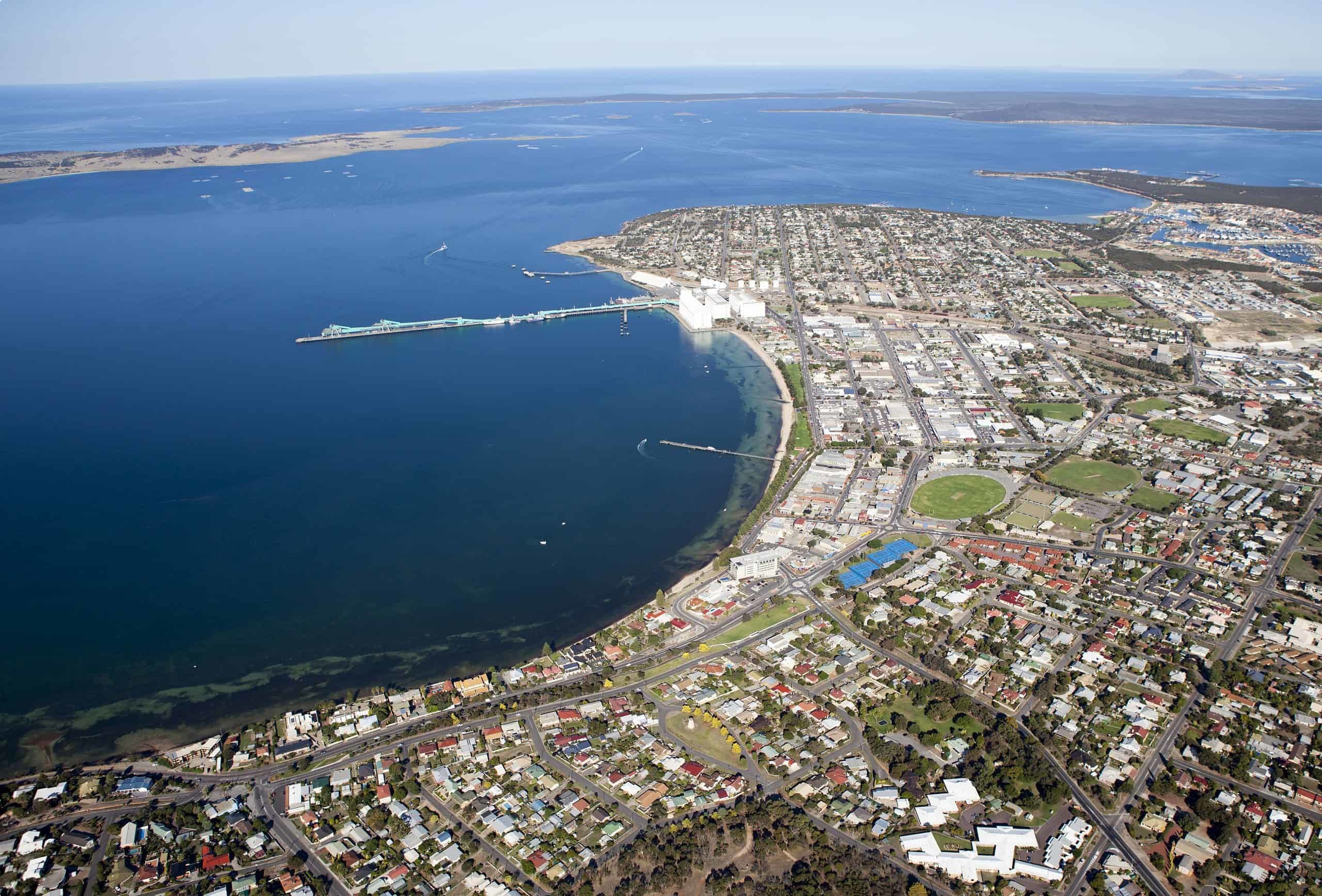
Lincoln National Park, on the other side of Boston Bay, is a 29, ooo hectare wilderness of granite headlands, secluded beaches, and offshore islands, with something to offer everyone. The headlands are a magnet for birdlife, with New England honeyeaters, silvereyes, and Port Lincoln parrots on the mallee coast, and hooded plovers, oystercatchers, and sea eagles on the beaches. On the southern side of the park are the immense Sleaford Bay sand dunes, shaped by the wild winds of the Southern Ocean.
The 31, 000 hectare Coffin Bay National Park, on the other side of the anchor-shaped peninsula, is likewise a patchwork of calm coves and sheer cliff faces. In the heart of the peninsula, there are ephemeral lakes and tea-tree scrub. The park was once covered in she-oak grassy woodland, cleared and grazed by pastoralists in the mid-19th century. Since the park was established in 1982, rangers and volunteers have devoted themselves to rehabilitating patches of she-oak grassy woodland. As part of this, the last Coffin Bay brumbies – wild descendants of Timor ponies brought to South Australia in 1839 – were relocated from the park in 2004. Native wildlife commonly seen here includes emus, goannas, and western grey kangaroos – while in winter, you might catch a glimpse of southern right whales or the great white shark from the Avoid Bay cliffs.
The town of Coffin Bay is a charming and sleepy fishing village, protected by a number of headlands, offering calm, pristine waters perfect for swimming. Seafood lovers should make sure to stop here to taste the world-famous fresh oysters at a local restaurant.
Head further west along the coastline, and you’ll reach the pristine beaches of Baird Bay, a tiny town with a population of only 3, with a cluster of houses, a caravan park, and a jetty. Despite its small size, Baird Bay attracts travellers from around Australia for the Baird Bay Ocean Eco Experience, the first tour company offering guests the opportunity to swim with bottlenose dolphins and Australian sea lions. The eco-friendly company is committed to protecting South Australia’s marine populations. When the company was first established in 1992, the sea lion population was around 35: today, it numbers over 120. The Australian sea lion, Australia’s only endemic seal, is officially regarded as endangered, with a global population of around 12, 000.
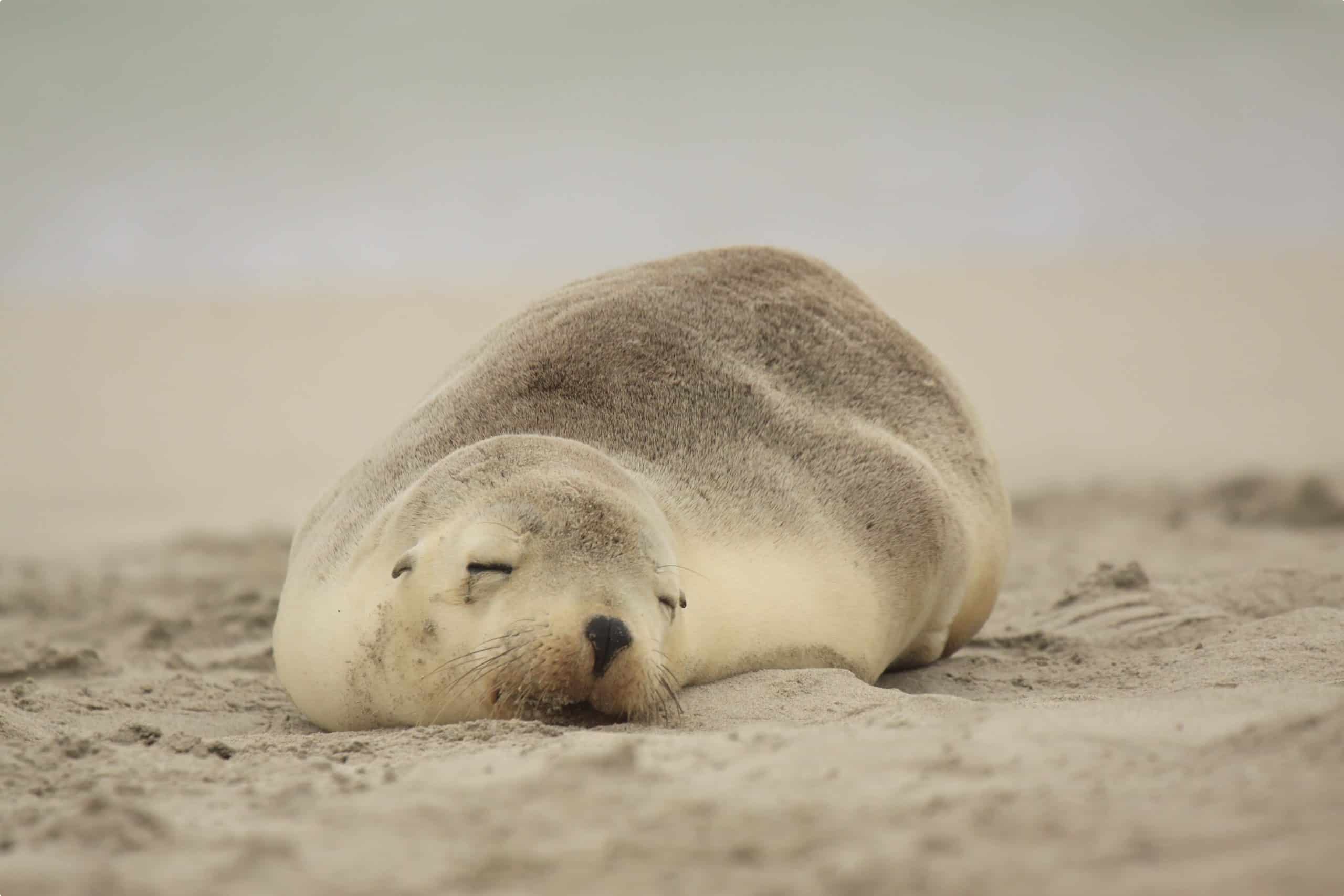
If you’re keen to see sea lions but not keen to jump in the water, the place for you is the Point Labatt Conservation Park. Point Labatt is home to mainland Australia’s only permanent breeding ground of Australian sea lions. Protected from mainland predators by sheer cliffs, sea lion pups learn to swim and play in the waters here, often aided by their mothers. At Point Labatt, pups are born every eighteen months, one in mid-winter, and then the next in mid-summer. They depend entirely on their mother’s milk for the first year, after which they begin chasing and (sometimes catching) fish. This long breeding cycle makes Australian sea lions particularly vulnerable, revealing the importance of sites like Point Labatt.
The nearby town of Streaky Bay was first sighted by the Dutch explorer Pieter Nuyts in 1627, and was named by Flinders after a ‘streaky’ discolouration he saw in the water, most likely seaweed. This charming seaside town is an ideal base for the western half the Eyre Peninsula, offering close proximity to Murphy’s Haystacks, a remarkable rocks formation formed out of pink granite. The granite was originally buried deep under the ground – around 7 to 10 meters, but reached surface level thanks to rain erosion. Over time they were weathered into their distinctive shape by the heavy winds of the Southern Ocean. The ‘haystacks’ got their name because a passing traveller mistook them for particularly impressive haystacks. Because the owner of the wheat field they were on was called Murphy, the formations were nicknamed ‘Murphy’s Haystacks’.
The Eyre Peninsula ends at the town of Ceduna, west of Streaky Bay, and the last major settlement before you reach the vast desert of the Great Australian Bight and the Nullarbor Plain, stretching across to Western Australia. Ceduna, like the rest of the Eyre Peninsula, is famous for its seafood, producing fish, squid, shark, crabs, and oysters.
Head inland on the peninsula, and you’ll enter mallee country: a semi-arid environment defined by the presence of the hardy mallee eucalyptus. Unlike Mallee regions near the Murray River, the peninsula lacks fresh ground water, with water piped from Morgan, on the River Murray. Deep into the Eyre Peninsula you’ll find the outback Gawler Ranges National Park, home to rolling red-dirt hills, striking geological features, and an array of natural wildlife, including the endangered yellow-footed rock-wallaby and the southern hairy-nosed wombat. To the north of the Gawler Ranges, Lake Gairdner National Park is home to one of Australia’s most surreally beautiful landscapes, the endless white surface of the salt Lake Gairdner contrasting sharply with the surrounding red-dirt.
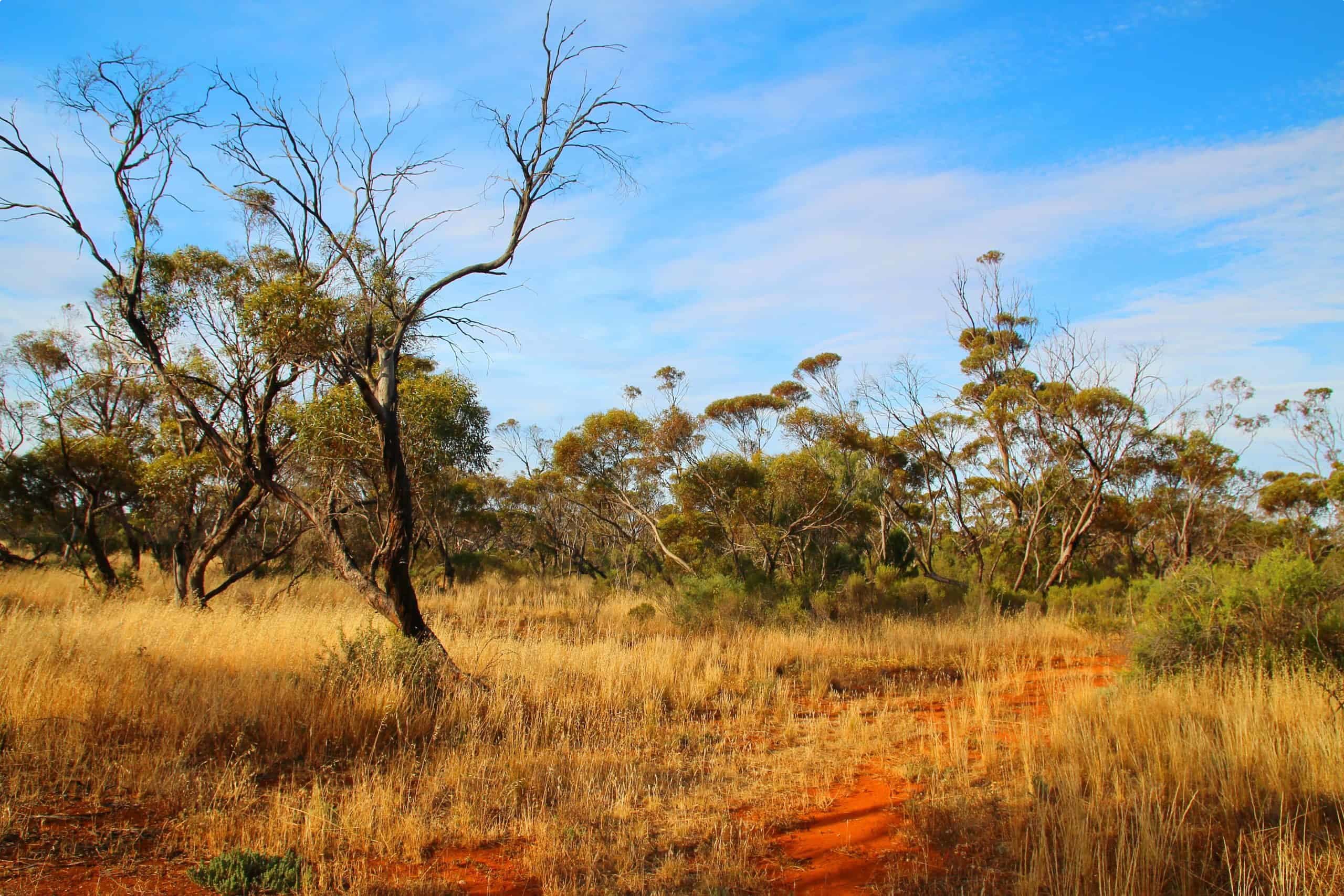
Odyssey Traveller visits the Eyre Peninsula as part of our ‘Two Peninsulas and a Mountain Range’ tour, devoted to South Australia‘s Eyre Peninsula, Yorke Peninsula, and the Gawler Ranges. Beginning and ending in Adelaide, this tour of South Australia heads to the rolling hills of the Gawler Ranges and Lake Gairdner, before winding its way east around the Eyre Peninsula, stopping in at Streaky Bay, Point Labatt Conservation Park, Coffin Bay, and a historic walking tour of Port Lincoln along the way. On the Eyre Peninsula, we encounter the region’s abundant wildlife, enjoy panoramic views of the southern ocean, and sample local gourmet food, particularly seafood. We also visit the historic port town of Whyalla, further up the Spencer Gulf. We then head to the Yorke Peninsula, on the other side of the Spencer Gulf, where we explore the copper-mining history and Cornish heritage of the upper peninsula, before visting the shipwreck coast of Innes National Park.
Travellers with an interest in visiting South Australia may also be interested in our guided tour of the Flinders Range and Wilpena Pound, or our tour of the Adelaide region, which visits the wine regions of the Barossa Valley and McLaren Vale, makes a day trip to the historic Adelaide Hills, and explores the pristine Kangaroo Island, in addition to learning more about Adelaide city. You may also be interested in our Southern Australia: World Heritage Sites and More tour, which explores the lands where Victoria, New South Wales and South Australia meet, heading from Adelaide to Broken Hill via Port Fairy and Mildura, and then head back through the historic mining town of Burra, South Australia.
Articles about Australia published by Odyssey Traveller:
- The Kimberley: A Definitive Guide
- Uncovering the Ancient History of Aboriginal Australia
- Aboriginal Land Use in the Mallee
- Understanding Aboriginal Aquaculture
- Mallee and Mulga: Two Iconic and Typically Inland Australian Plant Communities (By Dr. Sandy Scott).
- The Australian Outback: A Definitive Guide
For all the articles Odyssey Traveller has published for mature aged and senior travellers, click through on this link.
External articles to assist you on your visit to Australia:
- Top five things to see in Gawler Ranges National Park
- Eyre Peninsula
- Tourism Australia: Guide to the Eyre Peninsula
- South Australia’s Adventures of a Lifetime: Swim With the Wildlife
- The South Australia guide: Eyre Peninsula
- Get swept away by the Eyre Peninsula
- Yorke Peninsula
- Yorke Peninsula: Head north of Adelaide for the perfect round of Gulf
- SA History Hub: Yorke Peninsula
- Flinders and the voyage of the ‘Investigator’, 1801-03
Small group package tours of Australia
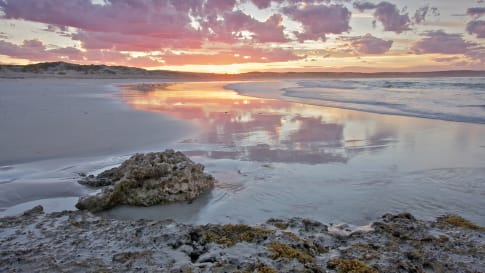
15 days
Sep, Dec, Jan, Feb, Mar +2Eyre & Yorke Peninsulas, and the Gawler Ranges
Visiting South Australia
Small group tour South Australia. Yorke, Eyre, and Gawler Ranges, discover the local history.
From A$10,350 AUD
View Tour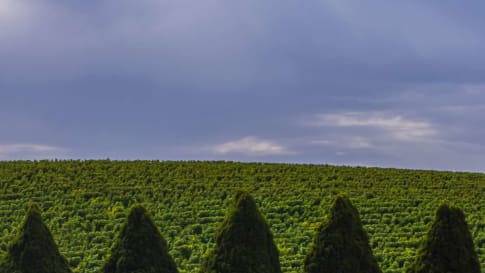
days
May, Aug, Sep, Oct, Nov +3Small group holidays to Adelaide and surrounds
Visiting South Australia
Explore and learn about on a small group tour of Adelaide city and its pastoral, cultural and historic settlement. Visit Fleurieu Peninsula, the Barossa valley, learn about William Morris and the arts and craft movement in the Art gallery and National trust houses.
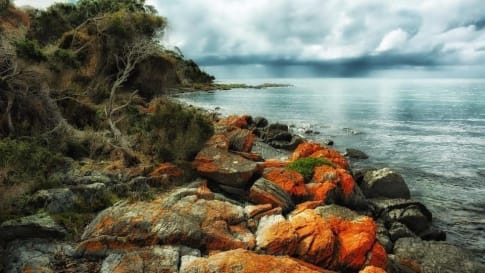
19 days
Mar, Nov, FebDiscovering Tasmania’s Wildlife
Visiting Tasmania
Small group tour of up to 15 mature and seniors travellers visiting and learning about Tasmania's wildlife and history. Visit Maria Island, Freycinet peninsula, Cradle Mountain, Strahan, Lake St Clair and Bruny Island over 16 days.
From A$11,450 AUD
View TourArticles about Australia

Aboriginal culture of the Flinders Ranges, South Australia
The iconic Flinders Ranges of South Australia have a rich Aboriginal heritage and are home to a number of vitally important cultural sites and ancient artworks that this small group tour for mature and senior travellers has the opportunity its to learn about.

Aboriginal land use in the Mallee
Learning about the Mallee for a escorted small group tour of South Australia and Western Australia for mature and senior travellers. Understand the Mallee & Wildflowers relationship and the indigenous community land use.
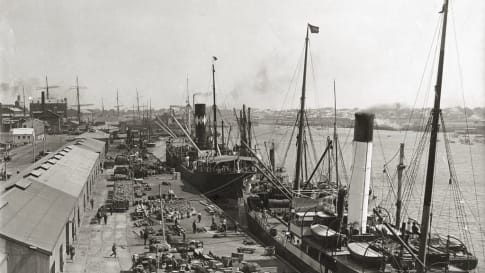
Exploring the museums of Port Adelaide, South Australia
8 days exploring Adelaide city and surrounds on small group tour for mature and senior travellers, couples and solo travellers visiting include Port Adelaide, The Barossa valley and Mclaren Vale and Fleurieu Peninsula.

Gawler Ranges and Lake Gairdner, South Australia
South Australia proves itself to be interesting from a landscape, wildlife and human history perspective on this collection of Australian tours. These 3 facets form part of a small group package tour for mature and senior travellers to consider with a group leader, whether as a couple or single traveller exploring the Eyre and York Peninsula.

Kangaroo Island, South Australia
Kangaroo Island is reached from Adelaide for a short break tours or view our small group tours of South Australia and/or Adelaide for senior and mature travellers.

Landscape of Southern Australia from Mallee and Mulga.
Escorted small group tours for mature and senior travellers in Western Australia, Victoria, South Australia & NSW drive through former Mallee country. Article explains the iconic beginnings of Mallee and Mulga in the arid landscapes.

